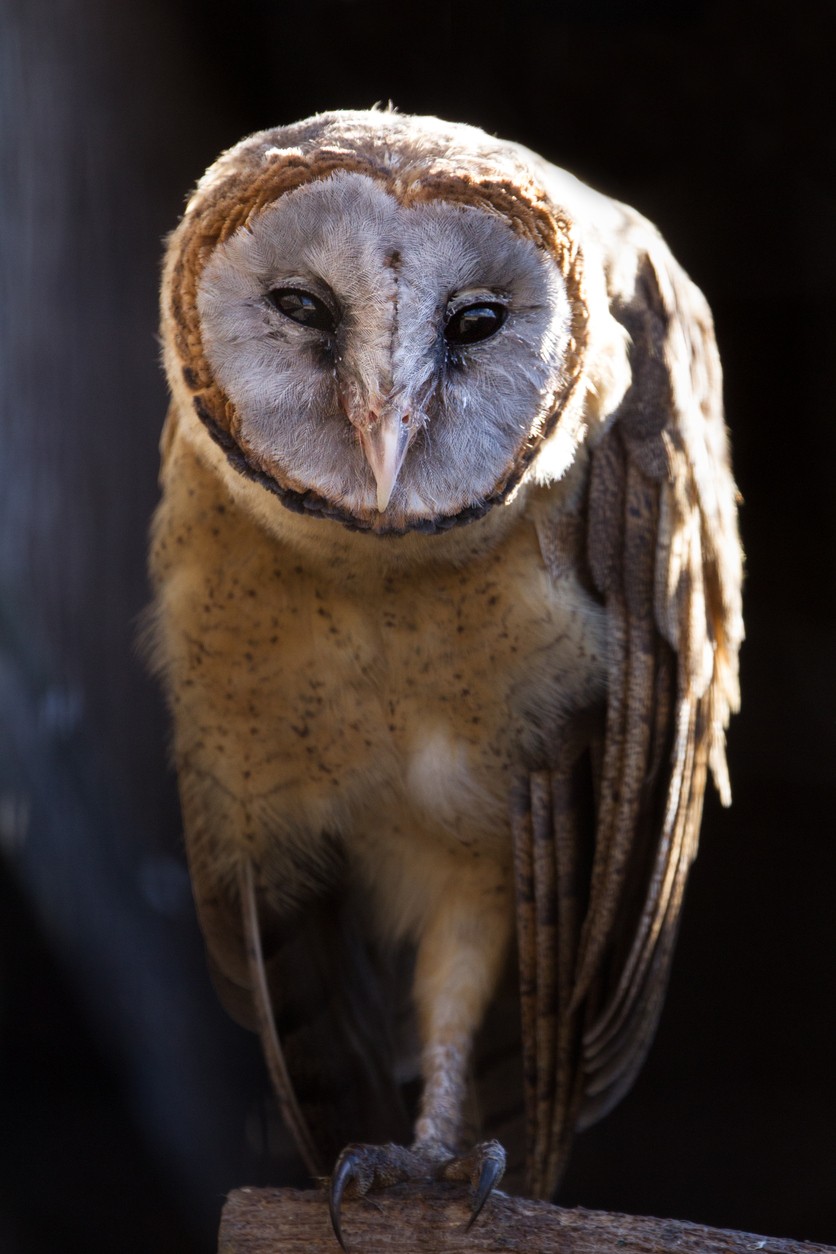Ashy-faced Owl
A species of Tyto, Also known as Tortugan Barn Owl Scientific name : Tyto glaucops Genus : Tyto
Ashy-faced Owl, A species of Tyto
Also known as:
Tortugan Barn Owl
Botanical name: Tyto glaucops
Genus: Tyto
Content
Description General Info

Description
The ashy-faced owl is quite similar to the darker types of the American barn owl (Tyto alba), and was formerly conspecific with that species. The facial disc is heart-shaped and ashy-grey. The dorsal (upper) surface of the head and body is yellowish-brown speckled with dark grey or black and the ventral (under) surface is pale. Adults grow to a length of 26 to 43 centimetres (10 to 17 in) and weigh between 200 and 400 grams (7.1 and 14.1 oz). The call is a rapid series of clicks followed by a wheeze, and the bird can also emit a shrill scream. 
Size
43 cm
Life Expectancy
34 years
Nest Placement
Cavity
Feeding Habits
Ashy-faced Owl preys on a varied diet including small mammals, birds, reptiles, amphibians, and a range of invertebrates such as insects and spiders. It employs stealth and nocturnal hunting techniques to capture prey, and it may exhibit specialized dietary preferences unique to its habitat.
Habitat
The habitat of ashy-faced Owl typically includes open woodlands, forests, and dry to moist broad-leaved forests. This species is also adaptable to living in scrublands, caves, and man-made environments such as agricultural areas, oil-palm plantations, and abandoned buildings, even extending into villages and towns. Occupying territories from sea level up to 2000 meters in elevation, ashy-faced Owl shows a preference for more densely wooded areas compared to areas inhabited by related species, specifically within the geographical realm of the Caribbean basin.
Dite type
Carnivorous
General Info
Feeding Habits
Bird food type
Behavior
The ashy-faced owl is a resident species and does not migrate. It nests in holes in trees, in crevices in rocks, on rocky ledges and inside buildings. A clutch of between three and seven eggs is laid some time between January and July. Like most other owls, the ashy-faced owl is nocturnal and feeds on small vertebrates. The barn owl (Tyto alba) was first recorded in Hispaniola around 1950. A study, published in 2010, was undertaken in the Dominican Republic to determine the diets of both owls, and whether they compete with each other for food. This was done by examining the regurgitated pellets the owls produce, which contain the undigested bones, fur, and feathers of their prey. It was found that they each consume over 100 species of prey, with 92 species being in common between the two. Small mammals predominated in both diets, particularly so in the American barn owl, and made up the greatest proportion of the biomass. Both caught a similar proportion of bats, but the ashy-faced owl caught more birds. Amphibians and reptiles were also consumed more often by the ashy-faced owl than by the American barn owl. No conclusion could be reached as to whether the competition for food which was caused by the arrival of the American barn owl, or if it was detrimental to the native species. 
Distribution Area
The ashy-faced owl is endemic to Hispaniola and some of the smaller islands in its vicinity, though it is more common in the Dominican Republic than Haiti. Its typical habitat is forest and open woodland and it is often found near towns and villages. 
Species Status
The IUCN lists the ashy-faced owl in its Red List of Threatened Species as being of Least Concern. This is because it has a very wide range across Hispaniola (mostly the Dominican Republic) and, although the bird is not common, its population appears to be stable. The ashy-faced owl faces competition for nesting sites and suitable habitat from the sympatric barn owl (Tyto alba). 